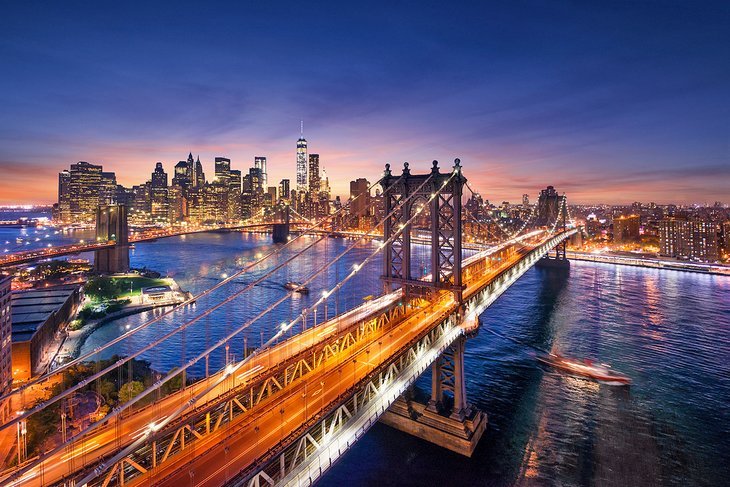The Best Ways to Travel Between Washington DC and New York City
Getting from Point A to Point B
There are a few key factors to consider when choosing the best transportation option between Washington DC and New York City. Are you traveling from the suburbs or city center? Where exactly are you starting and ending your trip? These details will help narrow down the most convenient and cost-effective choices.
Suburban to Suburban
If both your origin and destination are in the suburbs, driving your own vehicle is likely the easiest option. point-to-point automobile travel allows you to leave and arrive on your own schedule without relying on additional transportation links. Tolls and parking costs need to be considered, but the direct route often saves substantial time versus public transit requiring transfers. Car travel is also very flexible if you need to bring luggage or stop along the way.
City Center Connections
For trips originating or ending in the downtown areas, rail or bus services shine. Amtrak provides frequent, reliable train service between Washington DC’s Union Station and New York Penn Station. Journey times average around three hours, and advance purchase seats can be found for $50-60 each way. Within the city centers, subways and local buses offer convenient connections to final destinations without the hassle of driving and parking in dense urban areas.
Suburban to City Center
If one location is suburban and the other downtown, a combination approach often works best. Drive to a station on the outskirts and utilize commuter rail for the longer haul, avoiding traffic and simplifying the last few miles. Places like BWI and New Carrollton in the DC area or further NJ Transit hubs present parking and transit options. This “park and ride” flexibility leverages the benefits of different modes.
Weighing the Budget and Time Factors
Each transportation method entails pros and cons when it comes to cost, scheduled timing and overall trip duration. Careful evaluation of individual needs helps identify the best fit.
Low-Cost Provider: Intercity Bus
For truly budget-minded travelers, buses like Megabus and BoltBus offer fares in the $15-30 range each way between NYC and DC. Stations are located near rail terminals for connectivity. Downsides are slightly longer travel periods versus train and potential traffic slowdowns, but savings make the bus ideal for value-focused trips.
Speed and Reliability: Amtrak Northeast Regional
Amtrak’s Northeast Regional train provides a near three hour trip each direction with reliable on-time performance around 90% of departures. While fares start at $50 when booked in advance, last-minute tickets can approach $100 due to high demand. For business trips where time is of essence, the train delivers good speed without driving hassle.
High-End Amenities: Acela Express
As a premium service, Acela tickets command higher prices between $100-200 per segment. However, the trains offer business class comforts like wi-fi, ample legroom and power ports in addition to slightly faster trip times around 2.5 hours each way thanks to higher maximum speeds. For clients or special occasions, Acela provides a comfortable alternative to flying.
Weighing Access and Convenience
The complete experience from start to finish needs assessment when selecting the best cross-region connection. Factors like airport access, baggage policies and final destination considerations all factor into logistical ease.
Drive Yourself for True Flexibility
Personal vehicles afford maximum control over departure and arrival flexibility plus the ability to easily transport luggage or packs without fees. City center parking costs would need accounting though, and traffic variables could impact timing. Rental cars can work for one-way trips when paired with other public options on the return leg.
Fly for Pure Speed But Watch Expenses
While flights between DC and New York take less than an hour in the air, additional time is needed for check-ins, boarding, baggage claim and securing onward ground transportation after landing. Airfares also tend to be $150-200 roundtrip minimum before incorporating airport access andaggage fees or local transit links to final spots. Overall, flying adds time versus trains but saves over driving.
Multi-Modal Combinations Minimize Hassles
Mixing modes can provide the best of all worlds. For instance, parking at a commuter rail station and transferring to high-speed rail minimizes time in congested areas while preserving door-to-door flexibility. Similarly, a bus or train each direction paired with a rental car one-way optimizes personal control and reduced cost over solo driving both legs. Multi-modal itineraries require more planning but can eliminate individual weaknesses. In conclusion, the best travel choice between New York and Washington DC depends greatly on starting points, budgets and timing priorities for each unique trip. Considering all factors will yield the most convenient and cost-effective plan tailored to individual circumstances and transport needs. With various options, the perfect balance exists to make intercity commutes productive and hassle-free. 
/GettyImages-497322993-5891501d3df78caebcba182e.jpg)